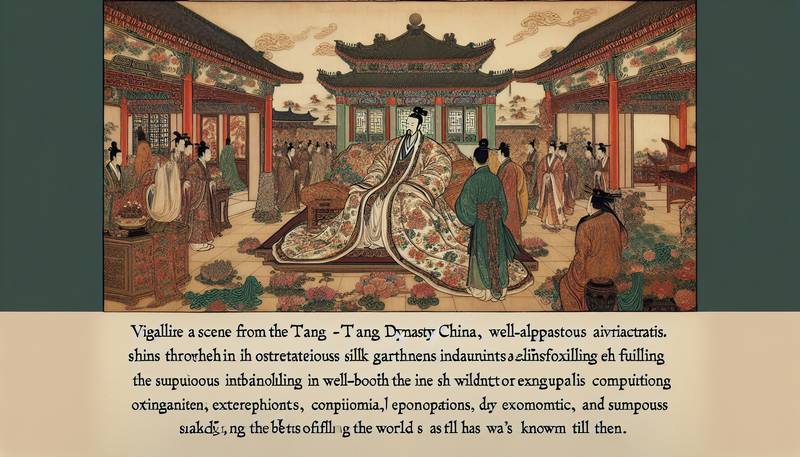Silk Road Riches: Tang Dynasty China's Luxurious Fabrics

Where It All Began: A Thread of HistoryIn a world where fabrics were once considered a mere necessity, the Tang Dynasty decided to throw a lavish shindig and elevate textiles to an art form worthy of royal decree. Silk, the crown jewel of fabrics, became the hottest commodity since someone discovered that kites could also be used for entertainment—talk about a glow-up! As emperors and empresses draped themselves in the finest silks, the rest of the world sent out invitations to join the party, making the trade routes busier than a bee at a flower festival.Silk Road markets sparkled like a glitzy disco ball, with merchants hawking their finest wares and competing for the title of “Best Dressed Trader.” It was the ultimate marketplace, where you could buy everything from exotic spices to silks that felt smoother than a cat on a freshly waxed floor.Silk: The Fabric That Ruled the RunwayIt’s hard to overstate the impact of silk in Tang society. This shimmering fabric was not just a form of clothing; it was a status symbol that declared, “I’m better than you, and even my pajamas are more luxurious!” Made from the delicate threads of the silkworm, silk became the go-to fabric for nobility and commoners who thought, “Why not aim high?”Transporting silk across treacherous terrains and through endless deserts was no walk in the park. It took an army of determined traders and camels that had likely developed a better sense of direction than most humans. These brave souls crossed mountains, valleys, and the occasional dragon-infested territory, all for the chance to deliver these precious silks to eager customers waiting more impatiently than children on Christmas morning.Patterns and Prints: A Fashion Show of the AgesThe artistry of silk production didn’t stop with the raw material. Oh no, that would be like serving a grand feast, but only providing bread and water. The Tang masters of design brought to life a visual feast of intricate patterns and vivid colors. With such designs, the fabric seemed to tell stories; tales of far-off lands and mythical creatures that could only be imagined—unless, of course, you had a very imaginative pet cat.These patterns ranged from delicate floral motifs to fierce dragons—because nothing screams “I’m powerful” quite like wearing a creature that can breathe fire. It’s no wonder that even centuries later, designers are still tipping their hats to this era when it comes to fabric innovation.The Silk Trade: More Than Just a Fabric ExchangeSilk was a big deal—not just because it was beautiful, but also because it became the cornerstone of an intricate trade network that connected the East and the West. Merchants who dealt in silk often found themselves more popular than the town jester. They didn’t just trade fabric; they exchanged culture, ideas, and even recipes for dumplings that would make one weep with culinary joy.As silk made its way to the West, it sparked a frenzy like no other. Imagine a parade of traders showing off their latest finds, only to have them snatched up by excited buyers faster than you can say “I’ll take two, please!” The demand for silk grew so intense that it could have caused a collective case of textile-induced hysteria.Legacy: Weaving the FutureThe legacy of silk from the Tang Dynasty lives on even today. Every time someone wraps themselves in a soft, luxurious scarf or dons a silk blouse, they’re participating in a centuries-old tradition that has seen empires rise and fall. These fabrics have survived more than just fashion trends; they’ve stood the test of time, much like that pair of jeans you can’t seem to throw away—even though they’re two sizes too small.As modern fabric designers look back to the innovations of the Tang Dynasty, they’re reminded that style is timeless, and comfort can be luxurious. Who knew that something as simple as a little silkworm could lead to such grand visions of fashion, culture, and history?Silk: A Stitch in Time Saves FashionThe world of silk, especially during the Tang Dynasty, was not just about clothing but about forging connections, sharing stories, and creating stunning pieces that thrilled the senses. As we continue to appreciate the art of fabric, it’s clear that this silky journey through history has not just clothed emperors but dressed the very fabric of civilization itself. So sit back, grab a cup of tea, and admire that silk scarf—because its journey from the silkworm to your wardrobe is one heck of a story.
|
|








